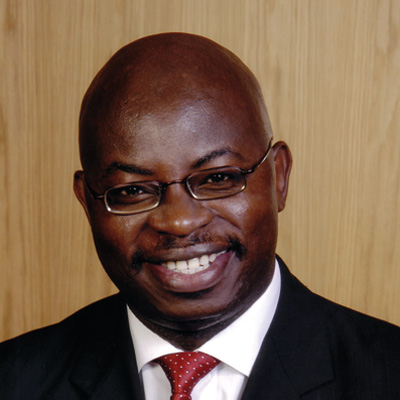
The Monthly Financial Sector Bulletin (MFSB) publishes “The Microfinance Interview” a monthly question-and-answer feature through which it engages with key stakeholders of the microfinance (MFI) sector, service providers, development partners and regulators, among others, on issues of topical and mutual interest. In this fifth instalment, the spotlight is on VIRL Financial Services, one of the very few women-owned microfinance institutions operating in Zimbabwe today. Virginia Sibanda (VS) co-founder and current CEO talks to NewsDay financial columnist Omen N Muza (ONM), who also edits the MFSB, about her trials and tribulations.
Financial Spotlight: Omen Muza
ONM: What is VIRL’s business model and target market?
VS: VIRL Financial Services is a developmental microfinance institution focused on working with economically active individuals in urban, peri-urban and rural Zimbabwe. The overarching target market is women within these geographical locations, as our target is to lend to 60% women.
ONM: We have just celebrated International Women’s Day under the theme Be Bold for Change and your organisation is one of the few woman-owned local MFIs. What difficulties have you had to overcome (if any) in order to be where you are today?
VS: The difficulties include operating in an unstable economic environment where policy inconsistencies cause high regulatory risk. Under such circumstances, planning for the medium to long-term is difficult and short-term survival tactics do not necessarily align with long-term objectives for the firm. Having said that, the major direct challenge is access to finance to grow the business given the uncertain economic environment. I have overcome these challenges by having the strong belief that as an individual I have a role to play in shaping the Zimbabwean story post-crisis.
ONM: What’s the organisation’s size in terms of loan book, number of branches and number of customers?
VS: The business currently has a book size of just over $3m, has seven branches supported by four satellite branches and a staff compliment of 56 reaching out to 5 000 customers.
- Chamisa under fire over US$120K donation
- Mavhunga puts DeMbare into Chibuku quarterfinals
- Pension funds bet on Cabora Bassa oilfields
- Councils defy govt fire tender directive
Keep Reading
ONM: As an organisation, have you received any technical assistance? If that is the case, what was the nature and source of that?
VS: VIRL has received technical assistance from CARE International Zimbabwe through training in group lending methodologies and understanding Internal Savings and Lending Schemes. VIRL has also been given technical assistance to reach out to youths through CARE initiatives funded by SIDA [Swedish International Development Cooperation Agency]. Apart from this, VIRL has also received assistance through the Livelihoods and Food Security Programme through FAO [Food and Agriculture Organisation] funded by DfID [Department for International Development].
ONM: What has been the impact of this technical assistance on the furtherance of your business goals?
VS: VIRL has been able to reach its target market and now has a good presence in rural Zimbabwe and it has developed into a better MFI with good corporate governance structures; good loan processing and accounting system, as well as well-trained staff. The technical assistance has repositioned the business such that it is better configured to meet the demands of the targeted market segment. VIRL was started on a capital base of $5 000, so the growth before the technical assistance had been just incremental as and when resources could permit and while this was necessary at the time, it also resulted in an institution that was not very strong, but trying to do hard things. So this technical assistance was instrumental in commercialising the business.
ONM: Your organisation was one of the MFIs to pioneer the formalisation of the mukando/marounds concept. Tell us more about your experience doing this.
VS: This was the first time for VIRL to collaborate with an NGO, and what was amazing was that CARE took us seriously at a point we had only been in operation for two years. There was a meeting of minds. CARE had developed the Mukando Model successfully and VIRL was looking for customers to work with. It was, therefore, logical for VIRL to develop products for these women in groups. This was a 16-month project back in 2012 and VIRL worked with 500 women, which was a real big deal for a small MFI.
ONM: What’s your view on the capping of interest rates by the regulatory authorities? What’s the impact of this on availability of microfinance loans?
VS: This is a rather difficult question, but, in my opinion, it goes back to why people start MFIs, how they start, what funding structure is in place, what motivates them to be in this business and, most importantly, what target market is the micro-finance institution focusing on. If these questions have been rationalised, in my opinion, one does not have to be told to cap interest rates, one does what is rational to ensure that their own business is sustainable and the people they are seeking to serve also run sustainable businesses. As for how this affects the availability of microfinance loans; a lot will depend on whether the financial institutions determine that it makes business sense to remain open at the lower interest rates or not. This is a complex issue, but market forces normally have a way with things.
ONM: What opportunities do you see in the local market for your organisation in particular, and for the microfinance sector in general?
VS: Zimbabwe is now so behind in terms of developmental microfinance, therefore, the country is ripe for serious players who are not just looking for making a quick return. For VIRL we are in the right place we want to be and making a difference so we feel we are well-positioned to work with institutional investors targeting rural finance and women and youth in particular.
ONM: And what are your key challenges, given the market segments you serve?
VS: The obvious one will be the economic situation, but the main underlying challenge is the lack of support in terms of financial literacy for women, youth and individuals living in rural areas. Another issue is that Zimbabweans have to get back to being people who feel that their word means something — that getting a loan and not paying it back is an issue. From my experiences in lending, that social fabric seems to have been compromised.
ONM: We understand that VIRL’s current sources of funding are equity, shareholders’ loans and loans from domestic and international financial institutions. Any plans to broaden the scope of funding sources by acquiring a deposit-taking licence?
VS: Definitely VIRL is looking at broadening its scope of funding as the business is ready to scale up, but the initial preference will be getting an institutional investor on board followed by a deposit taking licence. We still need to develop a bit more as a business. ONM: To what extent is the company leveraging on technology in its operations?
VS: To a very large extent. Our loan system Musoni has a lot of capabilities and this has helped VIRL to grow the business on the back of technology. When they are in the field, loan officers can use tablets which interface with the system.
ONM: We know VIRL as primarily a development-focused MFI, but what’s your take on the argument that some loans acquired under the “consumer lending” banner are actually deployed for productive purposes?
VS: Ah, I do like this analogy, the essence of focusing on the source of repayment and not the usage of the loan speaks to the core of the issue. The decision-making process that bases the repayment on the salary is not the same as the decision-making process on a loan that has to be fully repaid by the project being funded. How many organisations who deploy salary-based loans for productive purposes actually leave the office to go and assess the productive activity? How many times do they leave the office to check on the productive activity? This is a good development, but it is not the same. Both can co-exist and it is about business strategy, but they are not the same.
Omen N. Muza edits the MFSB. You can view his LinkedIn profile at zw.linkedin.com/pub/omen-n-muza/30/641/3b8 or initiate contact on [email protected].











